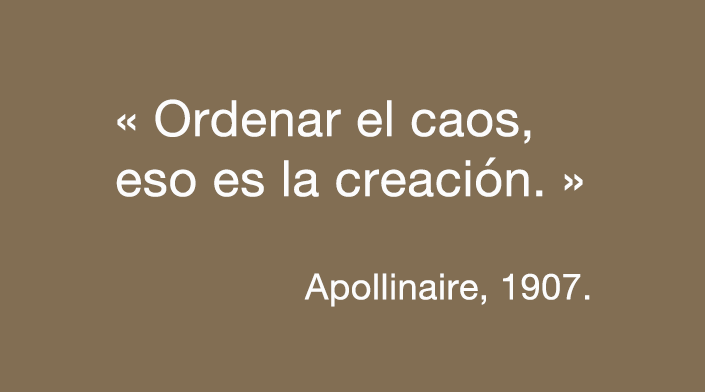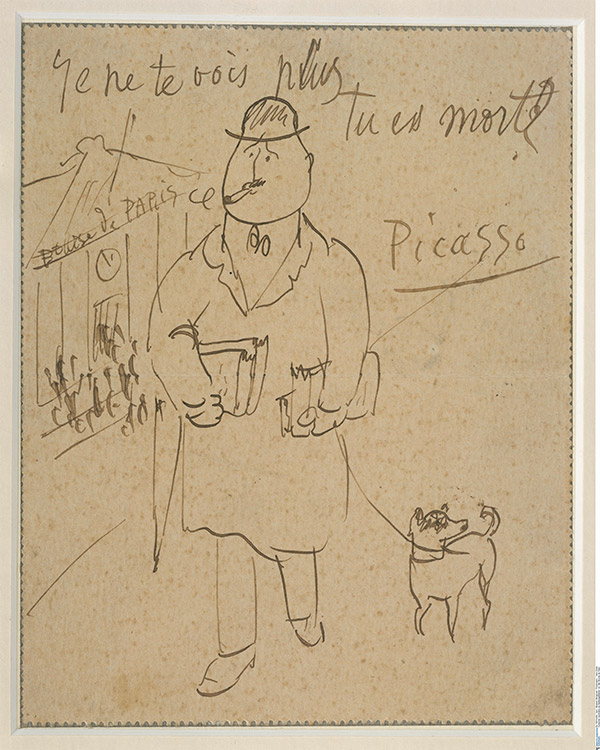Apollinaire, the friend “to life, to death”.
Picasso first met Guillaume Apollinaire near the Saint-Lazare train station, in the welcoming atmosphere of a café they both frequented. It was the poet's "secretary" Jean Mollet who made the introduction and a lifelong friendship ensued. The two artists became complementary allies at that moment in their lives: Picasso helped Apollinaire break out of his toxic relationship with his mother and the poet introduced the painter to the city's underground culture and offbeat literature. Jaime Sabartés, Picasso's friend, confidant, and depositary of all his secrets, later wrote of Apollinaire that he had made a lasting impression on Picasso "for his culture, his imagination, and his intelligence, three essential virtues in the milieu that suited Picasso, and three indispensable elements for the rising tide of spiritual revolution."[1]
Apollinaire, born in Rome on August 26, 1880 to an Italian father who never recognized his son and a Polish mother who gave him her name, Kostrowitzky (his full name was Guillaume Albert Vladimir Alexandre Apollinaire de Kostrowitzky), learned French in Monaco, where he moved to with his mother. His nomadic life, which resulted in a command of several languages, contributed to his open-mindedness and to the education and vast knowledge of the man who was eventually considered one the greatest French poets of the early 20th century. By the time he arrived in Paris in 1899, he had already devoured all the literature that came his way. Apollinaire started off working odd jobs and began to assiduously attend non-conformist literary circles, befriended André Salmon and Alfred Jarry, and was soon writing for several journals. With his engaging personality, his intellectual flights of fancy were as fertile as they were entertaining. Apollinaire managed to earn a living by publishing erotic novels signed with his initials. However, his main focus was always poetry, which he never abandoned despite all the trials of everyday life. He began publishing in 1909 ("La Chanson du mal aimé" in Mercure de France). Other works followed, such as Les Peintres cubistes, méditations esthétiques, based on his numerous articles published in L’Intransigeant. Alcools (1913), Le Poète assassiné (1916), and Calligrammes (1918) became landmarks of modern poetry. His collection L’Hérésiarque et compagnie was nominated for the Prix Goncourt in 1910.
[1] Jaime Sabartés, Pablo Picasso, Flammarion, 1955, pp. 32-37.






 Summary
Summary